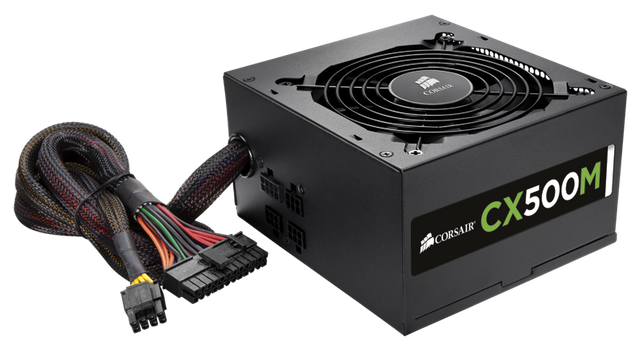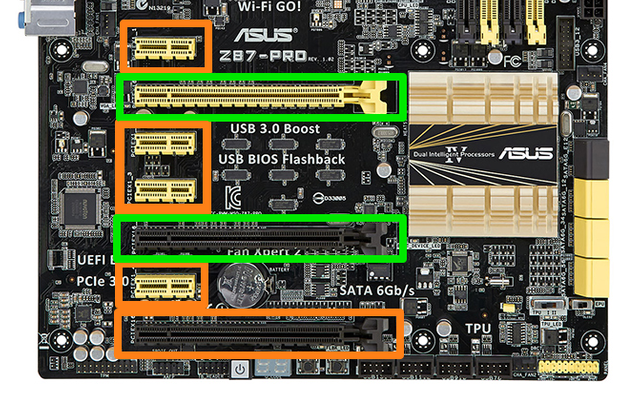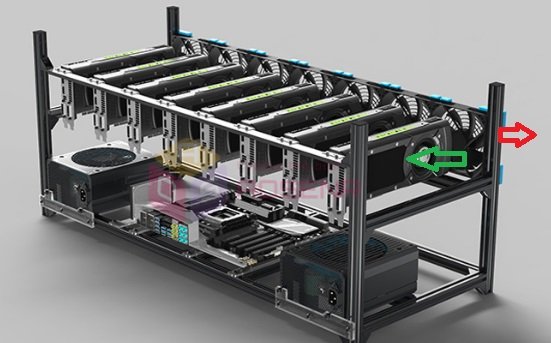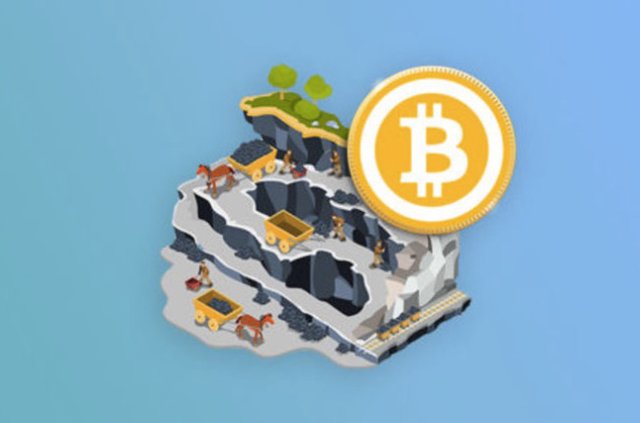The Beginner's Guide to Mastering Crypto
The Beginner's Guide to Mastering Crypto
Introduction
In this guide, I will be discussing many of the different aspects of cryptocurrency, such as useful terms, methods of earning/exchanging currencies, features and things to look for when investing, and much more. I will discuss market trends and different resources, faucets, different scams, and more. If you're looking to mine, invest, or use cryptocurrency, you've come to the right place.
Earning Cryptocurrency
• Introduction
In this section, I will discuss resources and methods of strictly gaining earning cryptocurrency. Cryptocurrency mining, faucets, gambling, and different resources will be provided for easy navigation.
Mining
‣ Introduction
Mining is a great way to earn cryptocurrency, but it is complicated, and can confuse the average beginner. There are specific things you have to look into, such as computer parts, compatibility, profitability, algorithms, and power consumption. Mining is the process of transactions being added to the blockchain/ledger. An average base rig could cost anywhere between $200 and $900 for all of the parts.
‣ Computer Parts/Rig Build Basics
A base rig is what I'm going to define as CPU only. A CPU is a Central Processing Unit, which all computers require. It runs the guts of your computer, such as the operating system (Windows/Mac/Linux), and other executables. You generally want to spend the cheapest amount of money you can if you're GPU (Video Card/Graphics Processing Unit) mining on your base rig, so that you can actually afford the GPUs. A general part list can be found here. It shows power usage, part compatibility, and price. I suggest using this website to build a rig.
◦ Hardware Requirements
There are a few requirements that are handy to keep in mind when building a rig, as they're very crucial to the success of your mining operation. Without paying very close attention to detail in the building section, you could order parts you think might go together, but when putting it together, could fry your motherboard.
- Power Consumption
There are 2 things you need to make sure you meet; The power intake, and the power outtake. The power intake would be the power that the rig pulls from the outlet, and the power outtake would be from your rig's power supply to the motherboard. You need to make sure that you can offer enough power to your motherboard, with enough efficiency to retain power efficiency. A generally good power supply would be 1000W Platinum Certified PSU (Power Supply Unit). It does not constantly pull 1000 Watts, just enough to power the motherboard; Example: I have a rig that requires 320W to use, but I have a power supply that supports 1000W. It will not constantly pull 1000W from the outlet, only 320W.
An average household in the United States uses $0.12/kWh, but we'll discuss this more later on.

- PCIe Slots
PCIe slots are slots that support different things being able to be directly mounted onto the motherboard. These can support WiFi cards, GPUs, and more, but their main use will be GPUs. Make sure you're using a motherboard either advertising as a cryptocurrency mining motherboard, or spend some good time finding one that doesn't. You don't need to fill these slots up immediately, so don't freak out if you think you have too many slots -- too less slots, and you won't cap out your power usage, too many slots, and you'll overheat your motherboard. With a 1000W PSU, go for 4-5 PCIe slots on your motherboard. Power usage can be calculated here. Each GPU uses up to 180W of power.

- WiFi Compatibility
When you're building your rig, you're literally building a computer. It won't come with any installed WiFi card, so you're either going to have to use a WiFi PCIe card, or a simple USB WiFi adapter. It's cheaper to use a USB adapter, but you'll also receive less bandwidth. Any card/adapter will do, it's really personal preference; 2.4GHz/5.0GHz. Make sure you're also on a 5.0GHz network if you're going with that.
- Airflow/Cable Maintenance
This is one if not the most important thing to be careful for. If your rig gets too hot, it can shutdown, melt cables, fry your motherboard, kill your PSU, and just cost you money. This is the main reason why everyone does and should build their rigs without cases. A good accessory to use in this is PCIe risers to separate your GPUs from each other -- these are also required to run 2+ GPUs. A PCIe riser plugs straight into the PCIe slot, and acts as an extension cord.

Now that we've covered the DON'Ts of building, the DOs are a short list.
Make sure you use this website to check compatibility before ordering the parts!
The second biggest DO is to make sure you're not maxing out your base rig. You don't need to go ridiculous on RAM, 4GB RAM DDR4 will do just fine. Look for a CPU that supports DDR4 RAM, and is Quad-Core.
◦ Software Requirements
The software required really depends on the method/coin you're mining with. I have two methods that can change your profitability tremendously; IMP (Immediate Mining Profit), or MHM (Mine, Hold, Mine).
IMP: An example of Immediate Mining Profit would be mining Monero (XMR). Mining this coin pays out a steady ~$1/day, and is great for a long-term investment, expecting you to run your rig at 100% efficiency.
MHM: An example of Mine, Hold, Mine would be mining a worthless coin until you accumulate a lot of said coin, then holding onto it until it becomes valuable, selling it, and switching to an IMP coin. This is a gamble, but it can make a huge difference in your end-profits.
Algorithms/Specific Mining Software
Every coin holds an algorithm (suspecting the coin can be mined) that it can be mined with. You might have heard of "Scrypt" coins or "CryptoNight" coins; These are just the algorithms for the coin. There is no specific miner to use, as with the correct commands, can run the mining algorithms with ease. Since this is a beginner's guide, a good place to start is MinerGate. MinerGate doesn't offer all of the coins, but it still offers XMR and worthless coins, so that should support CryptoNight, Scrypt, and IMP/MHM mining.
Faucets
Faucets are awesome, but can be a real pain. Lots of faucets are frustrating to use because of the high withdraw limits on each faucet. (Ex: "A minimum of 0.005 BTC is required to withdraw") I've only found ONE high-paying faucet that is really worth your time, called Coinpot. Coinpot supports Dogecoin, Litecoin, Bitcoin, Dash, and Bitcoin Cash, with all 5 faucets included. Coinpot also features the ability to convert profits from the faucets to other coins within their microwallet. In my opinion, it is worth it to transfer all currencies to Dogecoin before withdrawal, because they require a measly 50 Doge to be earned before withdrawal (NO FEES EITHER!). Since the time of this post, I have withdrawn 106 Doge from Coinpot in 2 separate transactions. I will list the faucets below for navigation:
- Coinpot Bitcoin (feel free to use AdBlocker)
- Coinpot Bitcoin Cash (AdBlocker disabled)
- Coinpot Litecoin (feel free to use AdBlocker)
- Coinpot Dash (AdBlocker disabled)
- Coinpot Dogecoin (feel free to use AdBlocker)
Each faucet offers a +1% Loyalty Bonus -- Claiming the faucet consecutively adds 1% more faucet to claim daily.
Gambling
Gambling can be a good thing or a bad thing. Don't use your earnings to gamble with -- I'll provide 2 websites that offer a small faucet to gamble with.
Primedice
A good principle to follow is to withdraw as soon as you get the chance. There of course will be fees, so gamble wisely. Don't chance it! If you think you're going to lose the balance, stop it before it hits it's last bet, because you most likely will if you don't.
Investing
Investing in crypto is one of the most common methods of earning cryptocurrency. Investing in BTC isn't always a good option, but when it is, it can be rewarding. Buy the Dip would be a great term to use in all of cryptocurrency, but even when specifically applied to bitcoin, it's still a viable option to earn capital. When investing in crypto, you need to keep up with the news! You need to know upcoming country bans, public bank statements, how the crypto effects large countries economy, and more. Doing a simple google search for "CoinNameHere News" can go a long way. When investing in worthless coins, it's always good to buy 100 to 200 at $0.00 - $0.02, or 1000 at $0.08+. The reason I have these set values is because at such a low price, you can't ensure price increase, or even decrease. But as the coin rises, and as you keep up with the news, you can get an idea of the interest of different countries on that coin. If you're not familiar with any markets, I suggest watching a few youtube videos on Forex and market indicators. There are all kinds of resources to use, but my favorite is Trading View. They offer all kinds of indicators for each chart.
-- END OF EARNING CRYPTOCURRENCY --
Useful Terms
IMP (Immediate Mining Profit):
A method name made by myself that points to a steady profit over longevity, with stable income.
MHM (Mine, Hold, Mine):
A method name made by myself that points to a risky profit over longevity, with alternating income amounts.
HODL (Hold On for Dear Life):
A typo made when typing "hold", has sparked an acronym for Hold On for Dear Life; A term used when a coin is dropping rapidly, and you own X amount of that coin.
ATH (All-Time High):
Used when trading, ATH can be seen when someone is talking about the charts or giving indications.
FUD (Fear, Uncertainty, and Doubt):
Usually used when bashing or talking about a sketchy situation in the crypto scene.
Bears, Bulls, Whales:
"Bears" is a signal given when someone thinks the price will go down (a bear stands and comes down to attack)
"Bulls" is a signal given when someone thinks the price will go up (a bull rams and attacks in an upward fashion)
"Whales" is a term used to describe someone that owns a large portion of the currency/stock and can make a big impact on the price or community.
-- END OF USEFUL TERMS --
Potential Scams
Cryptocurrency brings on many amazing features such as anonymousness, but with that, it can also result in bad outcomes, such as scams. There are a few scams to watch out for, but they're usually seen in business everywhere, and aren't crypto-exclusive. If you know what you're doing, this can actually be profitable. (Invest small amounts, pull out ASAP)
HYIP (High-Yield Investment Program):
Promises high returns, such as 1% daily Return of Investment, with no work required.
(EX: BitConnect/CryptoCity)
MLM (Multi-Level Marketing)/Pyramid Scheme:
When they offer free money just for paying a sign-on fee.
(EX: BitClub Network)
-- END OF POTENTIAL SCAMS --

Thanks!
You're welcome! This took me so long to write out xD. If you could drop a vote, that'd be amaaazzing